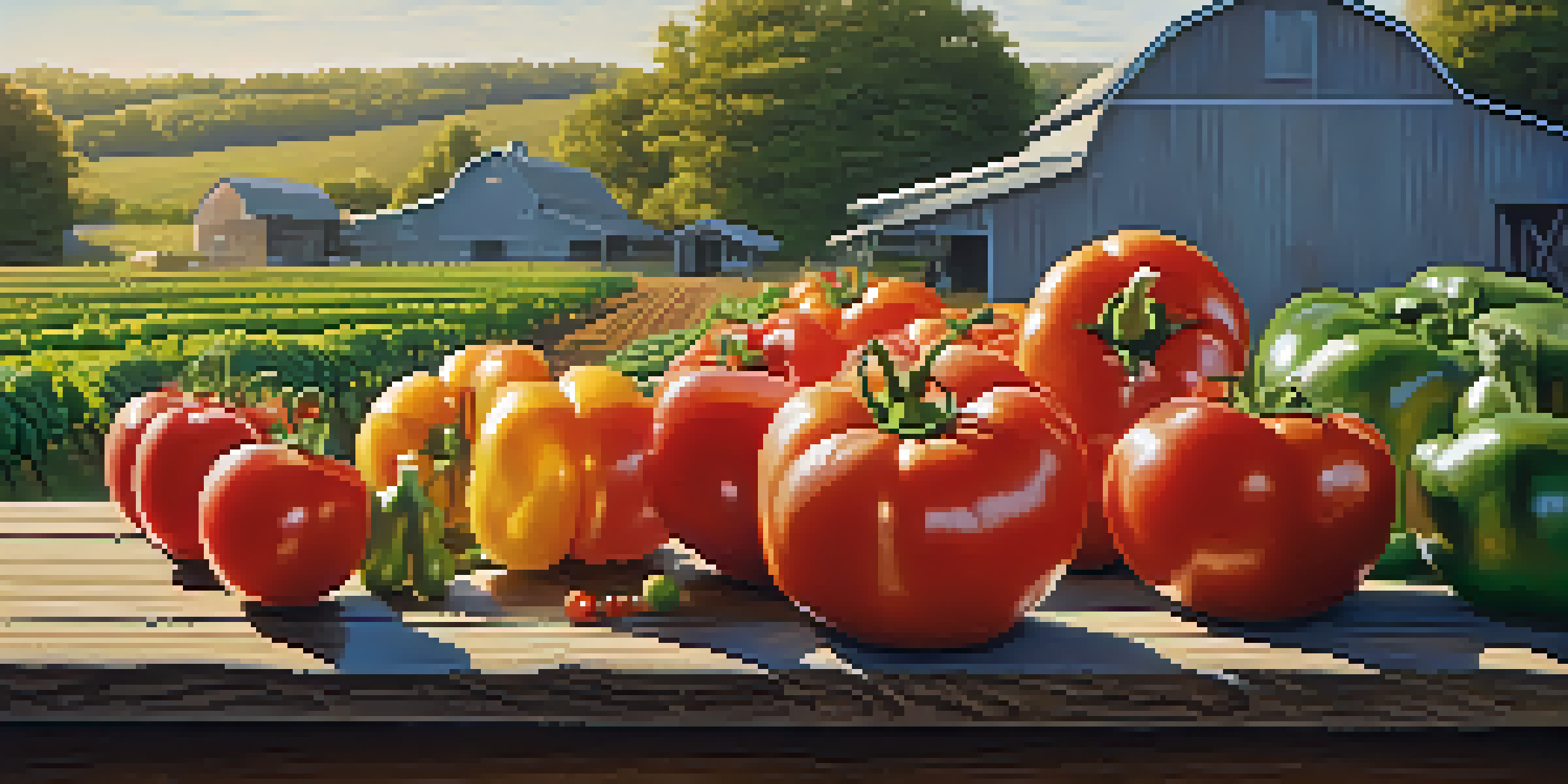Farm-to-Table Movement: New Jersey's Local Dining Experience

Understanding the Farm-to-Table Movement
The farm-to-table movement emphasizes sourcing food directly from local farms, promoting freshness and sustainability. This approach not only supports local economies but also strengthens the connection between consumers and producers. Imagine biting into a ripe tomato that was picked just hours earlier; the taste difference is undeniable and speaks volumes about the quality of fresh ingredients.
Why New Jersey is Perfect for Farm-to-Table
New Jersey, often called the 'Garden State,' is rich in agricultural resources, making it an ideal backdrop for the farm-to-table concept. With its diverse range of farms, from dairy to vineyards, the state offers an abundance of fresh produce year-round. This geographic advantage allows local restaurants to create menus that change with the seasons, providing diners with the freshest options available.
Freshness and Sustainability Matter
The farm-to-table movement prioritizes sourcing food directly from local farms, enhancing flavor and supporting sustainable practices.
Local Farms: The Heart of the Movement
Many farms in New Jersey are dedicated to organic and sustainable practices, ensuring that the food produced is not only healthy but also environmentally friendly. For instance, farms like Cherry Grove Farm and Terhune Orchards invite visitors to experience the farming process firsthand. By supporting these farms, diners contribute to a more sustainable food system and enjoy food that is not only delicious but ethically sourced.
Dining Out: Restaurants Embracing the Trend
Across New Jersey, numerous restaurants have embraced the farm-to-table ethos, showcasing local ingredients in their dishes. Establishments like Blue Bottle Cafe and The Farm & Fisherman Tavern highlight seasonal menus that change regularly, reflecting the offerings from nearby farms. This commitment to local sourcing not only enhances the dining experience but also fosters a sense of community among local farmers and chefs.
New Jersey's Abundant Resources
New Jersey's diverse agricultural landscape makes it an ideal location for farm-to-table dining, offering seasonal menus filled with fresh produce.
The Health Benefits of Local Eating
Eating farm-to-table isn't just about taste; it's also about health. Local produce is often picked at its peak ripeness, retaining more nutrients compared to items shipped from afar. Moreover, by consuming fewer processed foods and supporting local farmers, diners can enjoy a diet that is fresher and often more nutrient-dense.
Challenges Faced by Local Farmers
Despite the benefits, local farmers face challenges, including fluctuating weather conditions and market competition from larger agricultural producers. These factors can impact the availability of certain crops and the overall sustainability of small farms. However, initiatives and cooperatives are emerging to help support these farmers, allowing them to thrive in a challenging landscape while continuing to provide fresh produce.
Community Drives Local Eating
Community Supported Agriculture (CSA) programs foster a stronger connection between consumers and local farms, ensuring fresh, seasonal produce while supporting farmers.
The Role of Community Supported Agriculture (CSA)
Community Supported Agriculture (CSA) programs have gained popularity in New Jersey, allowing consumers to buy shares of a farm’s harvest in advance. This model provides farmers with necessary upfront capital and guarantees a market for their products. For consumers, it means receiving a box of fresh, seasonal produce weekly, fostering a closer relationship with the local food system.
The Future of Farm-to-Table in New Jersey
As awareness of healthy eating and sustainability continues to grow, the farm-to-table movement in New Jersey is expected to thrive. More chefs are likely to embrace local sourcing, and as consumers demand transparency in their food sources, local dining experiences will expand. This evolving landscape promises a vibrant future, where the connection between farm and fork becomes even stronger.